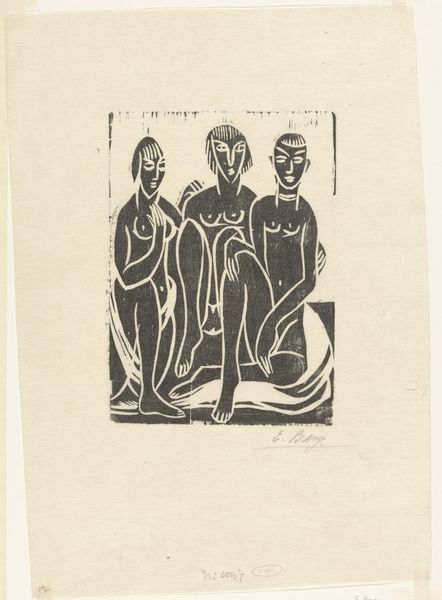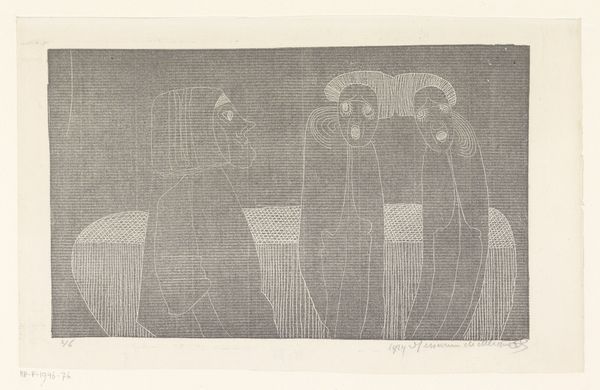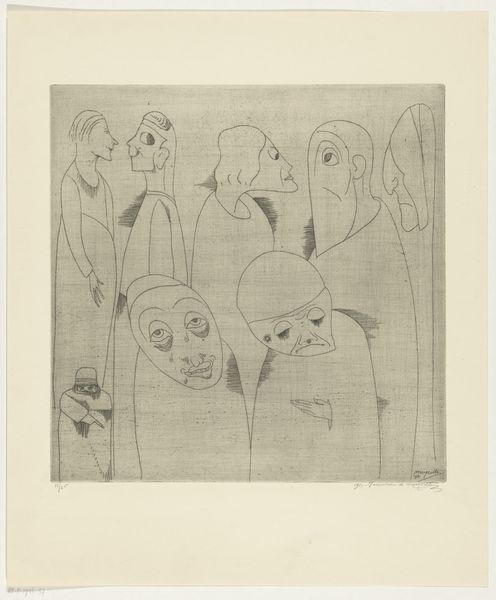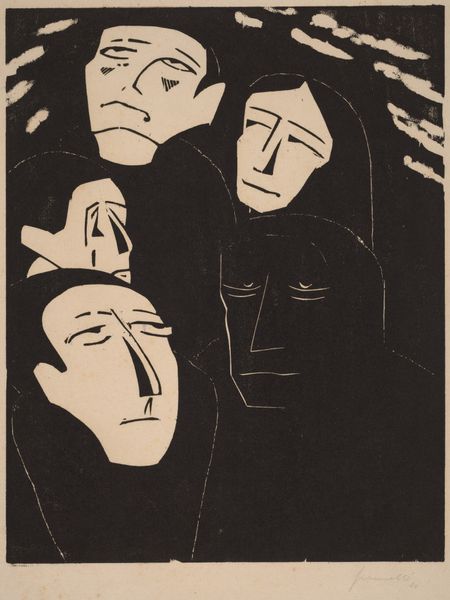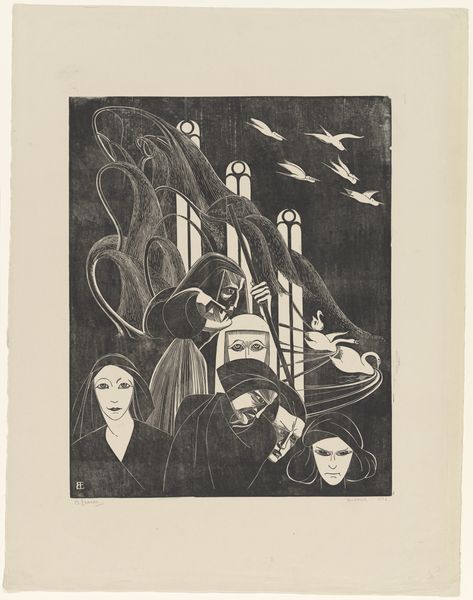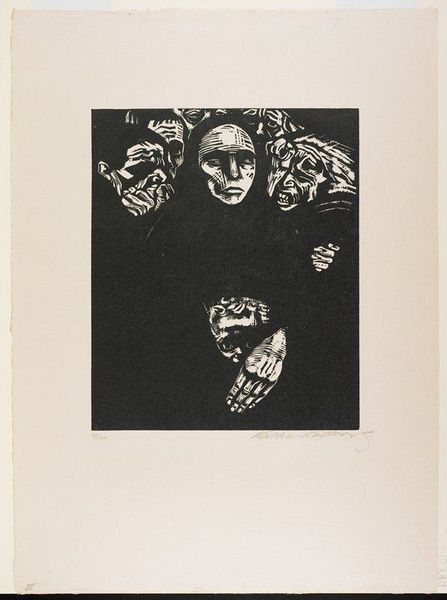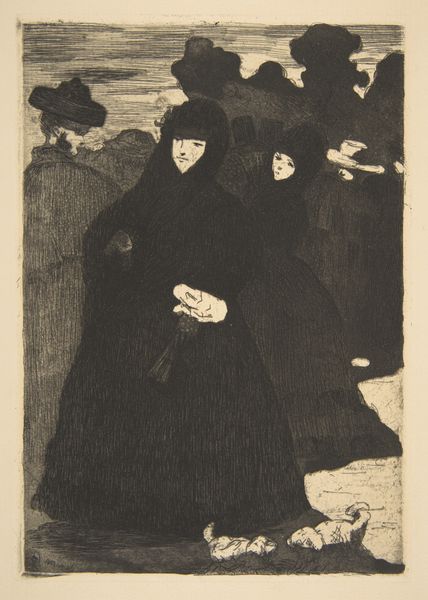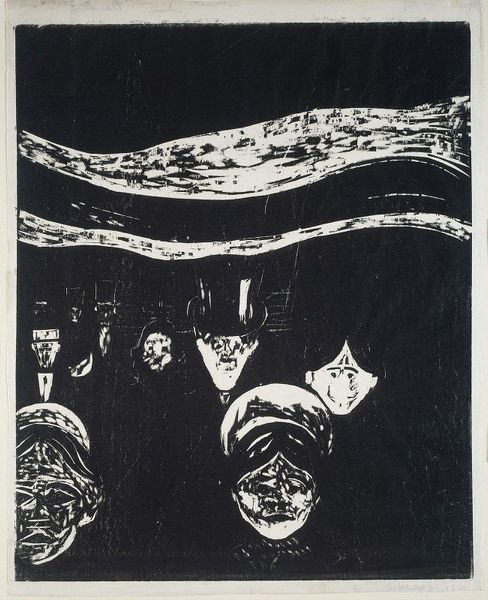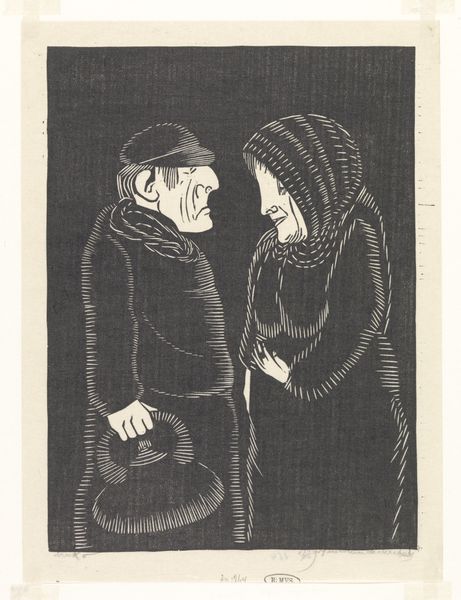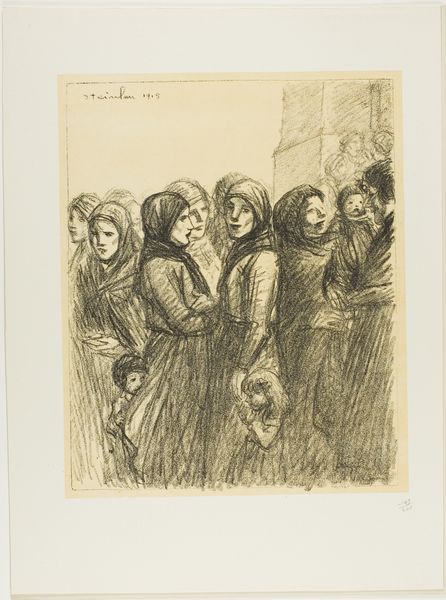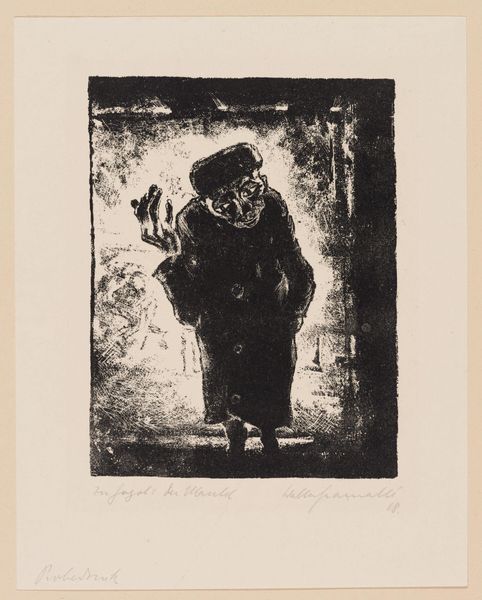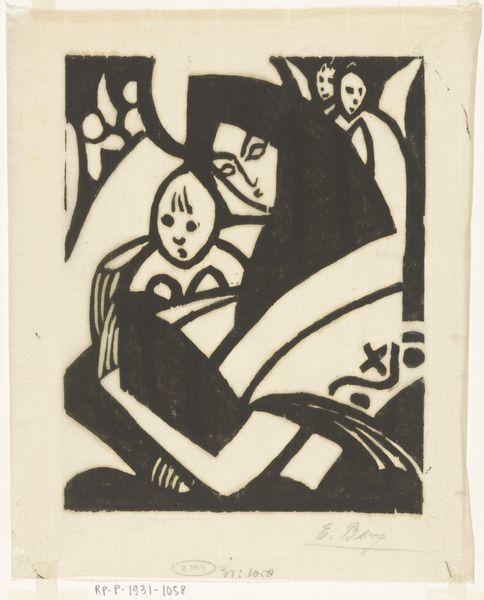
print, woodcut
# print
#
caricature
#
figuration
#
expressionism
#
woodcut
#
line
Dimensions: height 315 mm, width 270 mm
Copyright: Rijks Museum: Open Domain
Editor: This woodcut, "Drie Vrouwen," or "Three Women," was created in 1921 by Johannes Frederik Engelbert ten Klooster. The stark contrast and simplified forms give it a rather somber mood. What do you see in this piece, considering its historical context? Curator: It’s more than just somber. Consider the period: 1921. In the aftermath of World War I, society was grappling with immense loss, societal shifts, and a questioning of traditional roles. Look at these women: they’re huddled together, seemingly for support, yet their expressions are downcast. Does it suggest to you the burden and sorrow experienced by women during and after the war? Editor: Definitely. Their figures almost blend together, as if their individual identities are less important than their shared experience of grief. The figures seem deliberately simplified and abstracted, not quite caricature, yet clearly distorted. Curator: Exactly. The Expressionist style amplifies the emotional impact. Are they victims of the system? Do they embody the social burden of maintaining hope amidst chaos? Consider the limited palette – black and white, stark contrast. In your opinion, how does this enhance the feelings of distress? Editor: The high contrast makes the image almost brutal, without any gradations of emotion; the sadness feels raw and exposed. I notice they all have their hands on one another; is it meant to convey a sense of social action in this moment of solidarity? Curator: Perhaps; yet note their averted gazes. Even in solidarity, there’s an element of individual suffering that remains unseen. Maybe these women also point to social anxieties present between the wars: gender, race, or even the political positions of the figures. Editor: That's a good point. Seeing the print in the light of socio-political elements deepens my understanding. Curator: Exactly. It’s through such layered readings that we understand the radical potential of art, its ability to both reflect and critique society.
Comments
No comments
Be the first to comment and join the conversation on the ultimate creative platform.
